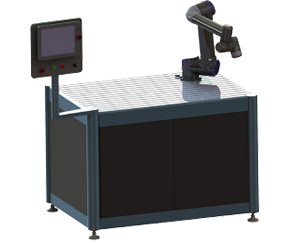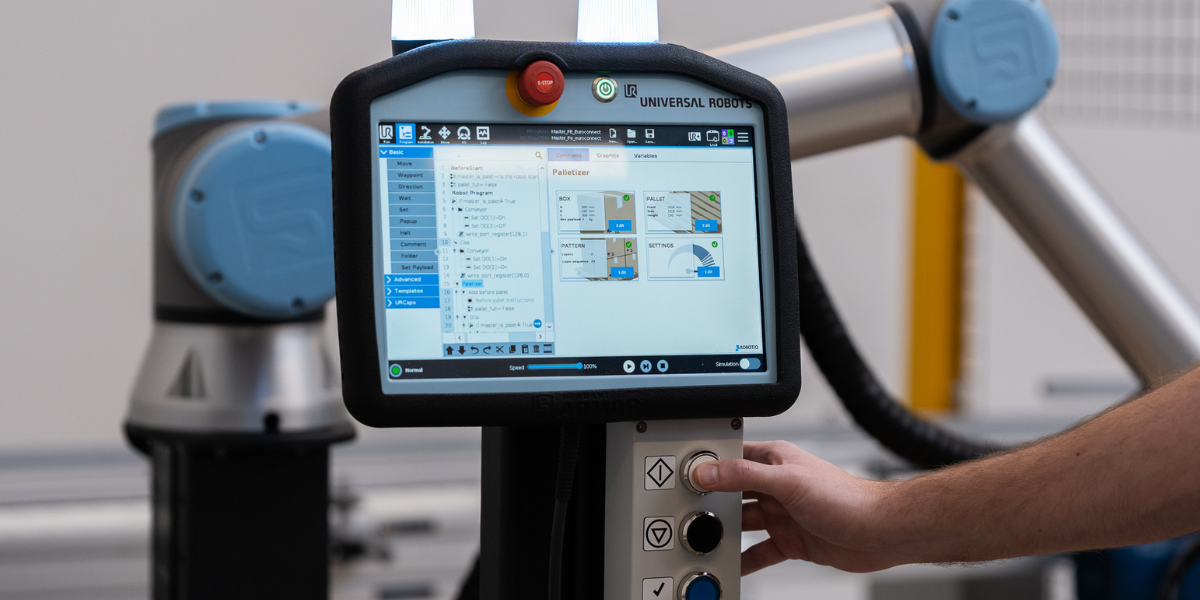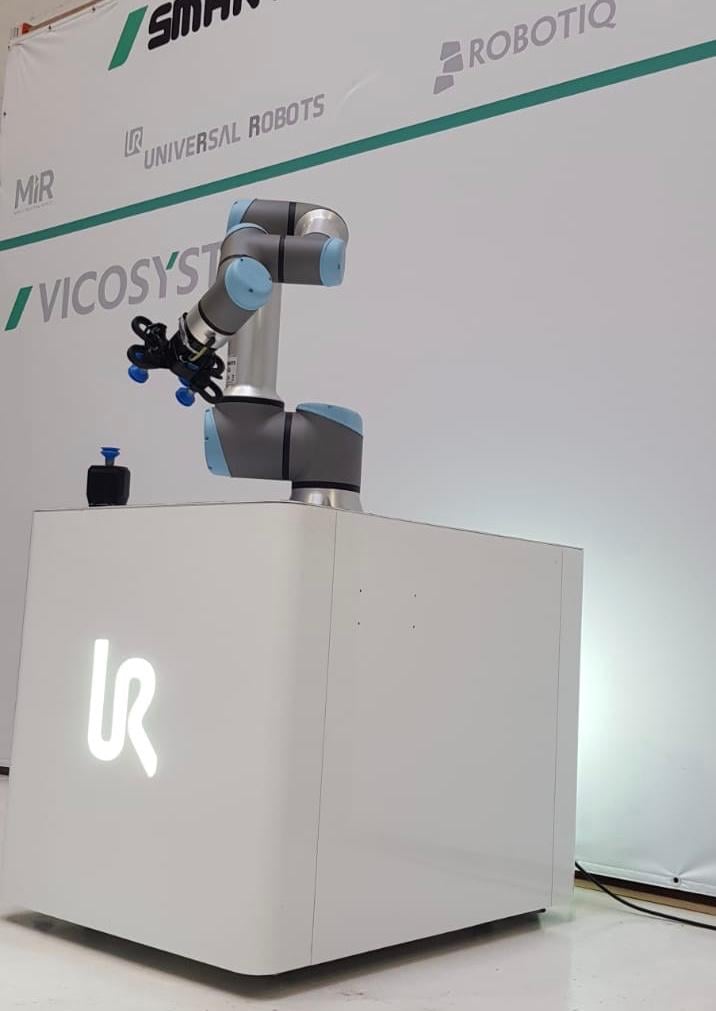All-inclusive Automated Machine Tending Cell

Posted on Feb 16, 2015 4:16 PM. 6 min read time
Machine tending is the operation which consists of feeding parts in and out of an industrial machine, as well as any side operations required to manufacture the finished parts. It is a job usually done by machinists, a skill that is getting increasingly harder to find in the active workforce. It is thus well suited for robotic automation, but it is also a process that requires flexibility. With the introduction of collaborative robots to the market, it is getting easier to automate your machine tending operation. This can be done by setting up your own robotic cell or another option is a built-in machine tending specific cell.
Machine Tending Specific Cell
Basically, this cell is all you need to perform machine tending operations. Most of the time, the cell will have a robot and its controller, a table or ordering station and other accessories such has safety guards to help you feed your machine.

It might seem like a simple cell to build yourself. However, it can sometimes be cool to have a predesigned package with everything included in the box. No need to search around the city to find the right pneumatic fitting... What you want is a simple, easy to use, all-inclusive package. And most important, if you decide to put robots on several machines, you can then buy the exact same cell and do the exact same integration. By buying single robots and specific devices, you can get bogged down really easily, especially with bigger robots and complex ordering systems.
Utilities
As mentioned in the introduction, machine tending is about feeding an industrial machine. Most of the time,CNC machines are used in this process. It is a simple process, taking the raw part, putting it in the chuck or vice, waiting for the part to be machined and putting it back in the ordering system. Since robots have good precision they can place the part at the same spot each and every time they for every step of this process and without fatigue or distraction.Collaborative robots are becoming more popular for this type of application. In fact, since these robots don't need fencing, they are easier to integrate. Another cool thing is that many of them can be programmed by hand-guiding. With this fast programming method, production is barely stopped and there is no need for highly skilled programmers. Robots such as Universal Robots are popular for this type of applications.
Advantages
-
Flexibility: The first advantage of using a robot in machine tending is its flexibility. In fact, for each and every part a new program can be execute which is adapted to the part geometry.
-
Easy Installation: Buying a machine tending specific cell means an easy installation. All the modules are designed to fit the robot and its accessories. The geometry of the cell is also designed for machine tending. Which means that the position of the table or ordering system will not block the reach of the robot.
-
Interface: In this kind of cell, the machine to robot interface is easier. Most communication channels will be installed to fit the CNC machine.
-
Reduced Design Time: Since the bundle has already been designed, this is a time saver for you.
-
Peripherals: Some external peripherals (vision, force-torque sensors, etc.) can be integrated with the cell, you should ask your integrator or dealer about the kinds of accessories that can be integrated with the cells you are looking at.
Disadvantages
-
Rigidity: The biggest downside of a preset cell is also its biggest advantage. In fact, since the bundle is already packaged, you probably can't adapt it to a specific case. In some cases this can be really useful, because it means fewer adaptation struggles, in other cases, you may want to have your robot in a nonstandard orientation and the cell might not allow for this.
-
Limited Choice: Some machine tending cells will match your application perfectly, others will be too small or too big. There is a limited range of robot size that can be integrated into your workshop. Make sure to do some research before going with a cell that is not adapted to your needs.
Here are some links to different integrated machine tending cells that can help you when shopping for your next robotic preset cell.
SICRONIf you are unsure about a particular machine tending cell and you are wary of the potential of a complex integration for these types of machines, you now have a plan B. Since there are all-inclusive packages available, this means less time spent in the design and integration phase of cell implementation. Besides you don't need to reinvent the wheel, other manufacturers are already using these cells and at the end of the day they are savings money and improving productivity. Why don't you join them!











Leave a comment